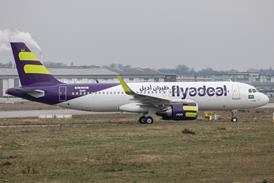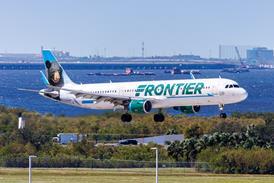GRAHAM WARWICK /WASHINGTON DC
Industry team will provide range of aircraft, helicopters and ships and integrated network in 20-year programme
A Lockheed Martin/Northrop Grumman team has been awarded an $11 billion contract to re-equip the US Coast Guard over the next 20 years.
Teams led by Boeing and Science Applications International were informed in March that their bids for the US Coast Guard's Deep-water re-equipment programme were not compliant (Flight International, 26 March-1 April). The contract is potentially worth $17 billion over 30 years.
Integrated Coast Guard Systems (ICGS), a 50:50 partnership between Lockheed Martin and Northrop Grumman will supply up to 91 ships, 35 fixed-wing aircraft, 34 helicopters and 76 unmanned air vehicles (UAVs), and upgrade 49 of the coastguard's cutters and 93 of its helicopters.
The team will also supply an integrated command, control, communications, computer, intelligence, surveillance and reconnaissance (C4ISR) system linking new and existing air, land and sea assets.
ICGS's Deepwater proposal included 35 EADS Casa CN235ER maritime patrol aircraft, 68 Bell Eagle Eye tiltrotor tactical UAVs and eight Northrop Grumman Global Hawk land-based long-endurance UAVs. However, the team's "open business model" means that 80% of the programme is still subject to competition between suppliers, says Jay Dragone, vice-president coastguard and international programmes at Lockheed Martin Naval Electronics & Surveillance Systems.
The initial contract covers the first five years of the programme, during which ICGS plans to install the C4ISR network, begin replacing the USCG's expensive-to-operate Dassault HU-25 Falcons with the more cost-effective CN235s, and upgrade the service's Eurocopter HH-65 Dolphin helicopters to extend their service lives. TheHH-65s will be replaced starting 12 years into the programme. ICGS has proposed the Agusta/Bell AB139, but Eurocopter will also be invited to bid and the Bell/Agusta BA609 tiltrotor is still being considered. "We have got some time, and there is plenty of competition," says Dragone.
The team will also upgrade the USCG's Sikorsky HH-60 Jayhawk helicopters, which will remain in service, as will at least six of the service's Lockheed Martin HC-130 Hercules - either upgraded C-130Hs or new C-130Js.
During the first five years, ICGS will deliver the first in a new class of national security cutters, larger than any current USCG vessel and capable of carrying two helicopters.
The team will build eight of these ships, plus 25 smaller offshore patrol cutters, each able to carry up to four tactical UAVs. A further 50 smaller fast response cutters will also be built. Although the tiltrotor Eagle Eye is the preferred UAV, Northrop Grumman plans to offer its RQ-8 Fire Scout unmanned helicopter, being developed for the US Navy.
Rather than buy the Global Hawks, the USCG plans to pay for data from UAVs that could be commercially operated from two land bases, under a "power by the hour" scheme. "The Global Hawks are 12-14 years away, and will need [Federal Aviation Administration] certification," Dragone says.
There will be a high degree of commonality between the sensors and mission packages and common command and control software across the various platforms. The CN235s and C-130s will be equipped with electro-optical and infrared sensors and synthetic aperture radar. The ships will also be modular.
Dragone says there is significant international interest in Deepwater, with Australia, Brazil, Chile, Greece and Norway having been briefed on the programme. "They can look at the analysis tools, the individual assets or it all as a system," he says.
Source: Flight International























